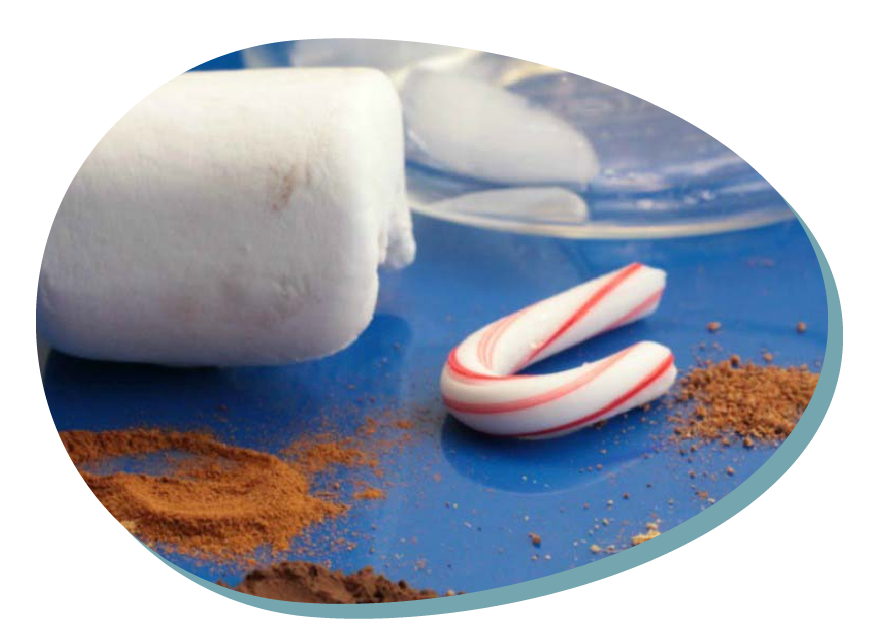Tastes of winter – blindfolded game
Type of resource: website, game, guidelines
Web address https://preschoolsteam.com/winter-preschool-science-activity/
Language: English
Description
Children will explore the sense of taste. The experiment consists on giving the children “winterish” foods, which they will taste blindfolded. Then they will express what they feel through their taste, and associate it with past experiences and bitterness, sweetness, or sourness.
Scientific concept introduced
Taste, sensations, senses.
Tastes: bitter, sweet, sour, salty.
Creative and critical thinking
To discover through their sense of taste.
To interpret what they sense and relate it to an ingredient they may have eaten before.
Mathematical reasoning
To classify the foods based on their taste: bitter, sweet, sour, salty.
Scientific thinking
Asking questions, observing (through their taste), exploring, making comparisons, drawing conclusions.
Learning how to learn
To develop motivation for the learning process, because of the food surprises.
To engage with the activity.
Additional
Sharing ideas, following rules and discipline.
Accepting management.
Large and fine motor skills, precise movement.
Acquiring vocabulary related to food.
Tastes of winter – blindfolded game
Overall aims
To develop the ability to observe and discover
To strengthen the research attitude of children
To improve children’s problem-solving (take initiative)
To create the learning opportunity for explaining the concept of taste
To improve their speaking and describing
Vocabulary – keywords should be understood
Play tray, blindfold, tongue, taste, sweet, sour, bitter
Expected learning outcomes (operational aims)
To follow the steps
To explain the concept of taste and the flavours sweet, sour and bitter
To discover with their sense of taste
To describe what they taste
STEM skills – to which the learning unit is related to
CORE STEM SKILLS
● Asking questions.
● Analysing and solving problems.
● Conducting research.
● Drawing conclusions based on evidence.
● Motivation to learn and engage.
● Self-disciplineand self-regulated learning (cognitive autonomy).
ADDITIONAL SKILLS
Sharing ideas
Taking common decisions
Following the safety rules and discipline
Accepting leadership and management
Basic literacy- describing
Teaching methodologies/activity outline
1- Set a small amount of flavour on each play tray.
Make a tasting pile for each child in class, to avoid cross-contamination of germs.
2- Blindfold each child before starting the tasting procedure.
3- Instruct the children to dip their finger in each pile and see if they can identify the taste.
4- Ask question like:
Is this flavour bitter, sweet, or sour? What does this flavour remind you of? How is this taste used in winter?
5- Ask them to try each flavour both blindfolded and unblinfolded.
What do they notice is different about the flavours when they are blindfolded versus when they can see?
You can record student reactions by taking digital pictures as they try different flavours. What type of face do we make when we eat something sour or something sweet?
Also, for art they can draw a picture of their expression after trying each flavour.
Assessment of learning
Initial evaluation
– Get to know the previous knowledge they could know about the same theme.
Continued evaluation
– Progressively acquire basic habits of autonomy in everyday actions, to act safely and effectively.
– Observe and explore the immediate, natural and physical environment, with an attitude of curiosity and respect and gradually participate in social and cultural activities.
– Participate in the activity, through movement, assimilating sensations related to taste and with a progressive understanding of the necessity of some norms.
– Use the oral language, gesture and images to express ideas, desires, feelings and emotions; Listen and participate actively in regular situations.
Conversation and learning with the use of non-discriminatory language, and with attitude of respect towards other cultures and different languages.
– Manifesting the necessary abilities to be able to listen, observe, interpret and create in the different languages: verbal, body, plastic, musical, and mathematical audiovisual, and incorporate the introduction to technological instruments (ICT).
Final evaluation
– To describe what they taste.
– To relate the tastes to ingredients.
Equipment and materials to be used in learning unit (tools, ingredients etc)
● Large play tray
● Tastes of Winter (for example a marshmallow, ice, ginger, cinnamon, cocoa, peppermint, nutmeg…)
● A blindfold for each child
Kind of setting
Preschool room
References – source
https://preschoolsteam.com/winter-preschool-science-activity/
Tastes of winter – blindfolded game
1. Usefulness for STEM education – integrating content of different disciplines
Cross-curricular character of the resource

The range of S-T-E-M subjects included

The presentation of possibilities of including artistic activities (STEAM approach)

2. Expected learning outcomes
Consistency (links) with preschool core curriculum

Communicativeness of description

3. Methodology of teaching
Clarity, communicativeness of instructions for teachers

Meaningful learning – using practical life problems

Original idea

The level of ease in implementing the methodology to preschool age children

The level of ease in preparing necessary ingredients, materials and equipment needed

4. Sustainability
Ecological characteristics of materials/ results

Supporting healthy eating habits

Relation with local traditions of cooking (using local products)

Low ecological footprint

Possibilities of inclusion (respecting cultural diversity and food intolerances)

5. Class management
Using differentiated forms of work – individual, team work etc.

Individual work

Team work

Whole group
6. Time management

Short activity (10-15 minutes)

Medium activity (20-30 minutes)

Long activity (1 hour or more)

Very long activity (1 day or more)
PDF: https://www.printfriendly.com/p/g/Sw3wR7

